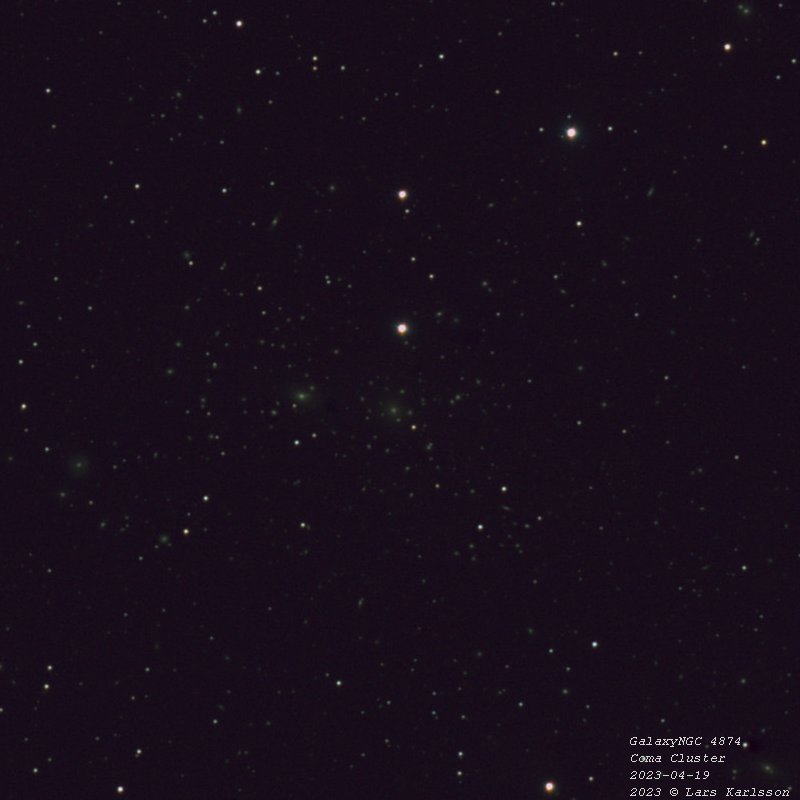| Object : | NGC 4874 galaxy and Coma Cluster |
| Coordinates/Direction : | RA: 12h59m, DEC: +27o57' |
| Object size : | ?' x ?' |
| Object magnitude : | 12.7 |
| More to know : |
Wikipedia:
https://en.wikipedia.org/ wiki/ NGC 4874
https://en.wikipedia.org/ wiki/ Coma Cluster |
| Exp. time : | 30x120 seconds at ISO1600, with every 3rd dithered |
| Image process tool : | Siril, Gimp, Irfanview |
| Processing : | cal dark, flat |
| Weather : | clear sky, no Moon, temperature +2 degrees Celsius |
| Comment : |
The last astrophoto of this season, I concentrate me on clusters.
This is the Coma Cluster centered around the very big elliptic galaxy NGC 4874.
Watch the full resolution photo with all the objects marked from Astrometry.net:
NGC 4874 plate solved.
There are more than 1000 galaxies in the Coma Cluster, many of them in this photo.
Below the bright stars is the NGC 4874 galaxy which is a very big elliptic galaxy, but at a distance of 360 million light years it still give a very tiny look.
I have noticed that after I started to calibrate the color of my astrophotos with known spectra from stars I get some green tint of weak galaxies.
Maybe okay because I can see that in professional photos sometimes too.
Something to investigate in the future.
This photo has some bright stars, with 120 seconds exposures there is a risk that they get over saturated.
I took an alternative with shorter exposures but more of them, same total exposure time. one hour.
I have tried to process both images exactly the same.
NGC 4874 60x60 sec Opens in a new window at full resolution.
Can anyone see some difference, in the background or at bright stars ?
I get the feeling that the bright stars looks better but the background has less details.
I process almost all my astrophotos to get a feeling how it looks visual, not any heavy increase of contrast.
My friend David told me that's a feeling he too get when doing visual observation in his mammoth Dobson. |
| Exp. time : | 60x60 seconds at 1600iso, with every 3rd dithered |
| Image process tool : | Siril, Gimp, Irfanview |
| Processing : | cal dark, flat |
| Weather : | clear sky, no Moon, temperature +2 degrees Celsius |
| Comment : |
At the same time I did the exposure a bit different, instead of 30x120 seconds I exposed 60x60 seconds.
Can you see any difference ? |
 (Click on image and get one in full resolution in a new window)
(Click on image and get one in full resolution in a new window)
 (Click on image and get one in full resolution in a new window)
(Click on image and get one in full resolution in a new window)